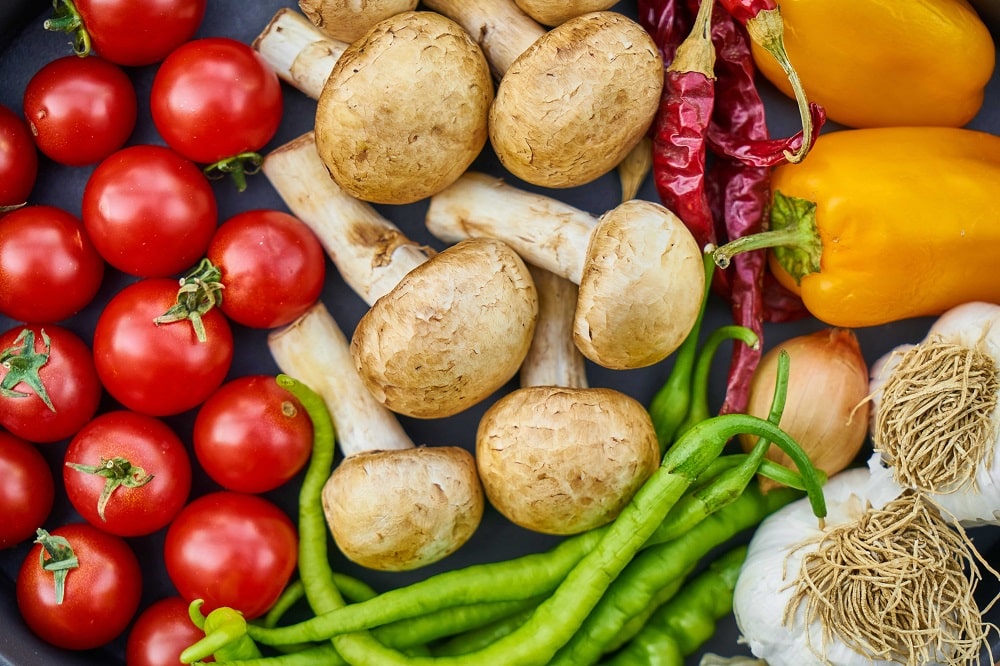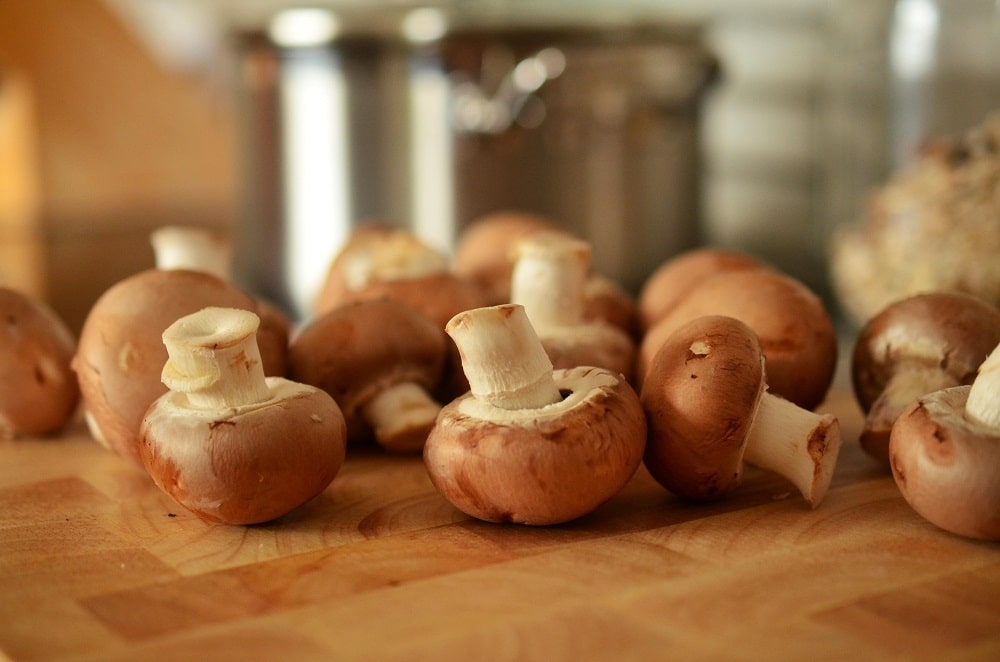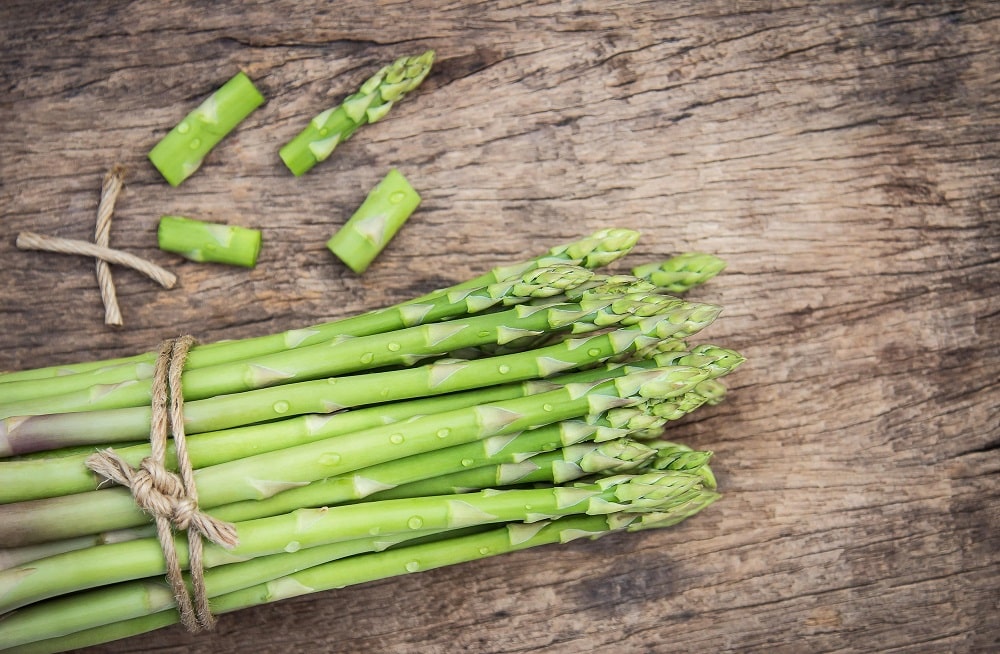Contents
- Common Vegetables in French
- 1. L’ail — Garlic
- 2. Les asperges — Asparagus
- 3. Les carottes — Carrots
- 4. Le panais — Parsnip
- 5. Le céleri — Celery
- 6. Le poireau — Leek
- 7. Les champignons — Mushrooms
- 8. Le chou — Cabbage
- 9. Le chou rouge — Red cabbage
- 10. Le chou frisé — Kale
- 11. Le concombre — Cucumber
- 12. L’échalote — Shallot
- 13. Les haricots verts — Green beans
- 14. Les haricots rouges — Kidney beans
- 15. La laitue — Lettuce
- 16. Le maïs — Corn
- 17. L’oignon — Onion
- 18. L’oignon rouge — Red onion
- 19. Les petits pois — Peas
- 20. Le pois chiche — Chickpea
- 21. La pomme de terre — Potato
- 22. La patate douce — Sweet potato
- 23. Le poivron — Bell pepper
- 24. Le piment — Chili pepper
- 25. La tomate — Tomato
- 26. La tomate cerise — Cherry tomato
- 27. Le brocoli — Broccoli
- 28. Le chou-fleur — Cauliflower
- 29. Les épinards — Spinach
- 30. Les choux de Bruxelles — Brussel sprouts
- 31. L’artichaut — Artichoke
- 32. La courgette — Zucchini
- 33. La courge — Squash
- 34. Le navet — Turnip
- 35. La citrouille / Le potiron — Pumpkin
- 36. Le basilic — Basil
- 37. La betterave — Beet
- 38. Le radis — Radish
- 39. Le gingembre — Ginger
- 40. L’aubergine — Eggplant
- Typical French Vegetables You’ll See on Menus
- Common French Vegetable Expressions
- How to Practice French Vegetable Vocabulary
- And one more thing...
40+ Vegetables in French (with Audio)
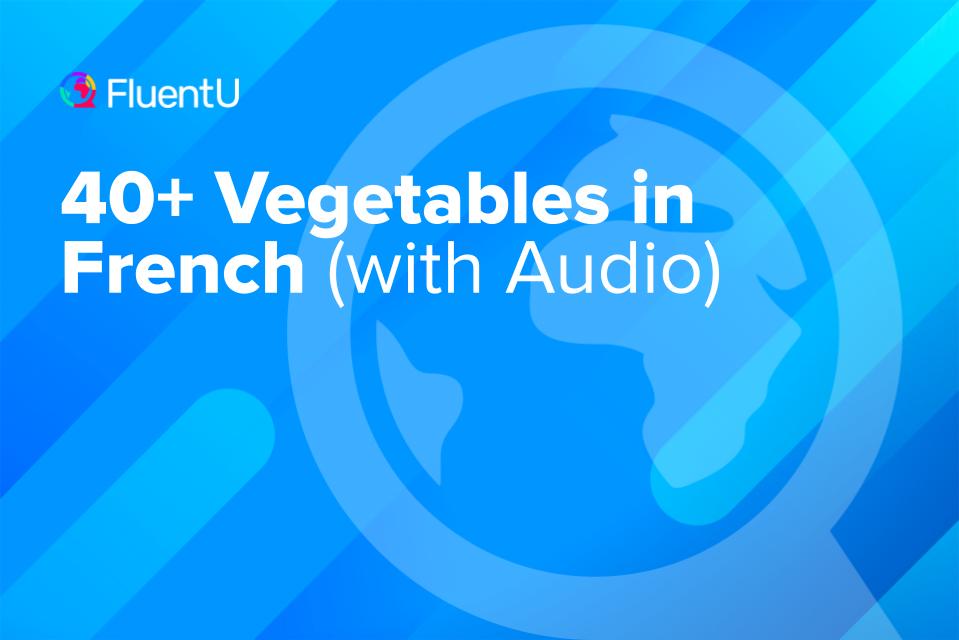
Food and French culture are intertwined. There are so many different dishes the French are renowned for internationally, and les légumes (vegetables) are an essential part of French cuisine.
Knowing how to say vegetables in French is important, and even more so if there is one particular vegetable you can’t stand. We’ll share 40+ common vegetables in French as well as famous vegetable-based dishes and popular vegetable expressions amongst the French.
Download: This blog post is available as a convenient and portable PDF that you can take anywhere. Click here to get a copy. (Download)
Common Vegetables in French
Knowing how to say the names of vegetables in French is an important part of not only learning to speak the language, but also understanding French cuisine and culture.
French cuisine is a vital part of French culture and there are so many famous and delicious French vegetable-based dishes!
Let’s take a look at 40 of the most common vegetables in French.
1. L’ail — Garlic
2. Les asperges — Asparagus
3. Les carottes — Carrots
4. Le panais — Parsnip
5. Le céleri — Celery
6. Le poireau — Leek
7. Les champignons — Mushrooms
8. Le chou — Cabbage
9. Le chou rouge — Red cabbage
10. Le chou frisé — Kale
11. Le concombre — Cucumber
12. L’échalote — Shallot
13. Les haricots verts — Green beans
14. Les haricots rouges — Kidney beans
15. La laitue — Lettuce
16. Le maïs — Corn
17. L’oignon — Onion
18. L’oignon rouge — Red onion
19. Les petits pois — Peas
20. Le pois chiche — Chickpea
21. La pomme de terre — Potato
22. La patate douce — Sweet potato
23. Le poivron — Bell pepper
24. Le piment — Chili pepper
25. La tomate — Tomato
26. La tomate cerise — Cherry tomato
27. Le brocoli — Broccoli
28. Le chou-fleur — Cauliflower
29. Les épinards — Spinach
30. Les choux de Bruxelles — Brussel sprouts
31. L’artichaut — Artichoke
32. La courgette — Zucchini
33. La courge — Squash
34. Le navet — Turnip
35. La citrouille / Le potiron — Pumpkin
36. Le basilic — Basil
37. La betterave — Beet
38. Le radis — Radish
39. Le gingembre — Ginger
40. L’aubergine — Eggplant
Typical French Vegetables You’ll See on Menus
It’s important to know the basic vegetables listed above.
But if you’re traveling to France, you’ll do well to go a bit deeper and learn some less common vegetables as well as some common varieties:
- Cèpes (King Bolete/Penny Bun), pieds de mouton (Sheep’s Feet) and chanterelles (chanterelle). These are some common mushrooms you’ll see on the menu. Many people in France like to hunt for their own mushrooms, so it’s not surprising that they have different words for the numerous edible varieties.
- Le chou cabus (firm, light-colored cabbage), le chou de Milan (Savoy cabbage), le chou rouge (red cabbage) and le chou chinois (Napa cabbage/Chinese cabbage)
- Le poireau (leek) doesn’t always make its way onto American menus, but it forms the basis for several French dishes. From the French-Belgian border region comes la flamiche, a puff-pastry tart that’s frequently made aux poireaux (with leeks). And you also may have heard of la vichyssoise, a famous French leek soup that’s often served cold.
- Le fenouil (fennel) enjoys modest popularity in France, with preparations like le gratin de fenouil et de pommes de terre (a fennel-and-potato casserole topped with melted gruyère cheese).
Common French Vegetable Expressions
Vegetables have made their way not only into French cuisine, but French slang, as well.
Famished? Feast on these French idioms about fruits and vegetables by the bushel! Or if you’re just peckish, nibble on a few yummy, plant-based idioms:
- Une asperge — a very tall and thin person (literally, “an asparagus”)
- Raconter des salades — to tell tales, to make up stories (literally, “to tell (tales about) salads”)
- Avoir du blé — to have money (literally, “to have wheat”)
- Avoir la patate — to be full of energy (literally, “to have the potato”)
- C’est chou vert et vert chou — “same difference” or “it’s all the same to me” (literally, “it’s green cabbage and cabbage green,” used primarily in Belgian French)
- S’occuper de ses oignons — to mind one’s own business (literally, “to mind one’s own onions”; figuratively)
- La carotte et le bâton — using a combination of enticement and threats to motivate someone (literally, “the carrot and the stick”)
- Mettre du piment — to spice (something) up (literally, “to put in some red chili pepper”)
How to Practice French Vegetable Vocabulary

Learning vegetable words in French doesn’t have to be a tedious chore. Try these activities to get in some practice:
- Watch French cooking videos. French-language cooking videos are not only entertaining but a great way to improve your French fluency—whether you’re at a beginning, intermediate or advanced level in the language. Not only will your vocabulary grow, but so will your understanding of French cuisine.
- Watch short cooking videos with FluentU.
FluentU takes authentic videos—like music videos, movie trailers, news and inspiring talks—and turns them into personalized language learning lessons.
You can try FluentU for free for 2 weeks. Check out the website or download the iOS app or Android app.
P.S. Click here to take advantage of our current sale! (Expires at the end of this month.)
- Get cooking with vegetables using French recipes. Use online French recipe resources and food blogs to practice French veggie vocabulary. Cooking with French recipes will not only expand your vocabulary, but will also give you a better understanding of French cuisine.
- Go out to eat at a French restaurant. People often say that French gastronomy is one of the best in the world! If you’re looking for a fun way to test your French vegetable vocabulary, you could visit a French restaurant. Practice reading the menu and see what the French-style vegetables taste like!
- Go to a local vegetable market and try naming the vegetables in French. Try visiting a local market or vegetable stall and name the vegetables on display. This is a great way to test your vegetable knowledge and identify any gaps or missing vocabulary. Make sure you take note of any ones you can’t name in French to learn when you are back home.
- Write your shopping list in French. Sometimes a little action can go a long way. An effective way to practice French vegetable vocabulary is by writing your shopping list in French. This method will quickly help you solidify the vocabulary you’ve learned and integrate it into your everyday life and language.
Now you know the 40 most common vegetables in French as well as famous vegetable-based dishes and sayings.
You’ll be able to order confidently in French restaurants and conquer the vegetable kingdom in your own kitchen.
So, learn your vegetable vocabulary in French. It’s good for you.
Download: This blog post is available as a convenient and portable PDF that you can take anywhere. Click here to get a copy. (Download)
And one more thing...
If you like learning French vocabulary on your own time and from the comfort of your smart device, then I'd be remiss to not tell you about FluentU.
Other sites use scripted content. FluentU uses a natural approach that helps you ease into the French language and culture over time. You’ll learn French as it’s actually spoken by real people.
FluentU has a wide variety of great content, like interviews and web series, as you can see here:
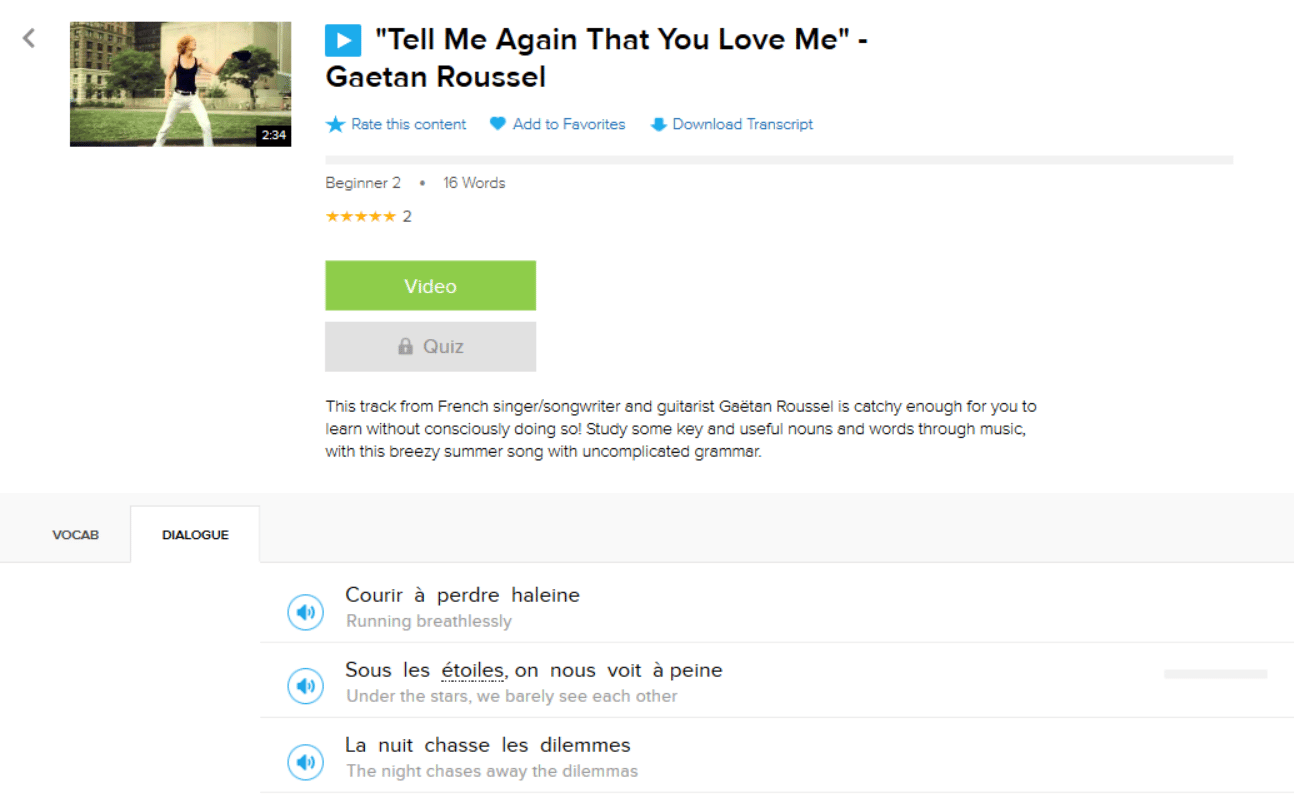
FluentU brings native videos within reach with interactive subtitles.
You can tap on any word to look it up instantly. Every definition has examples that have been written to help you understand how the word is used.

For example, if you tap on the word "crois," you'll see this:

Practice and reinforce all the vocabulary you've learned in a given video with FluentU's adaptive quizzes. Swipe left or right to see more examples for the word you’re learning and play the mini-games found in the dynamic flashcards, like "fill in the blank."

As you study, FluentU tracks the vocabulary that you’re learning and uses this information to give you a 100% personalized experience.
It gives you extra practice with difficult words—and reminds you when it’s time to review what you’ve learned.
Start using the FluentU website on your computer or tablet or, better yet, download the FluentU app from the iTunes or Google Play store. Click here to take advantage of our current sale! (Expires at the end of this month.)
